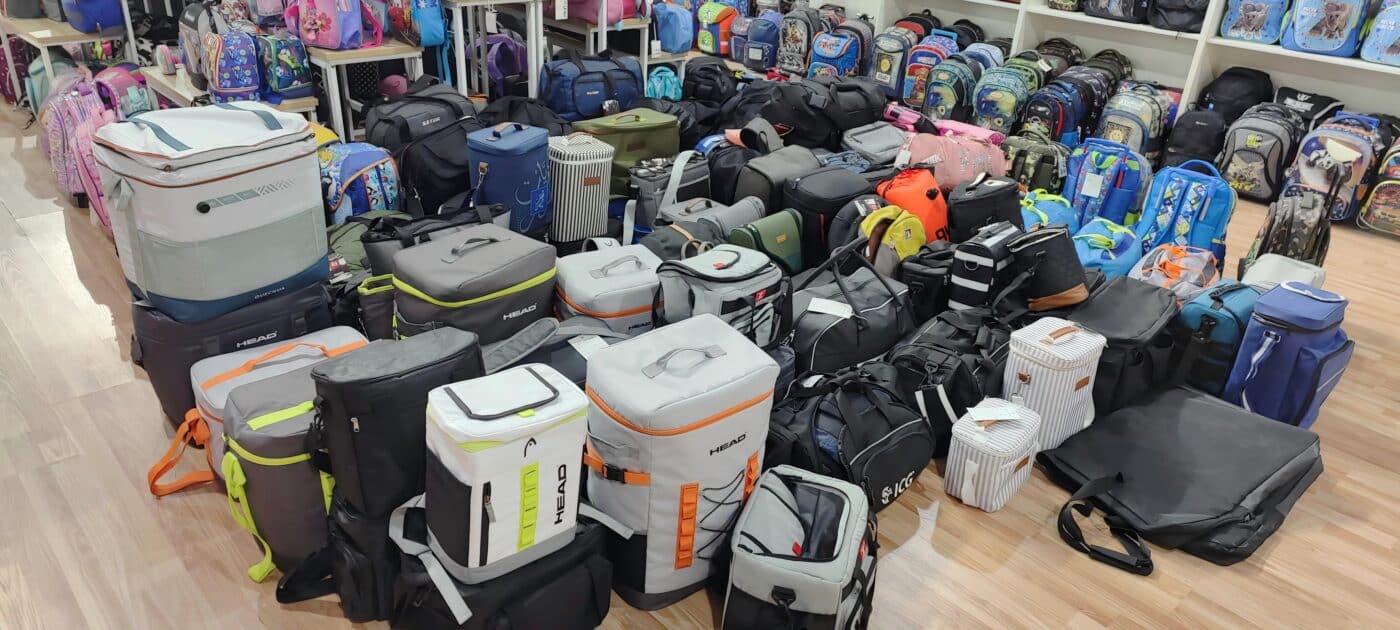Enterprise News
Different Types of Cooler Bags: A Complete Buyer’s Guide for Brands and Retailers
Understand how different types of cooler bags perform, their cooling times, weight, price, and applications. Ideal for sourcing managers, brand buyers, and retailers.
Introduction: Why Cooler Bags Matter
Cooler bags have become an essential category in travel and outdoor gear — balancing convenience, temperature control, and brand style. For sourcing managers and product designers, understanding cooler bag types helps you identify the best designs and materials for your market.

How Cooler Bags Work
Cooler bags use insulated layers to maintain internal temperature by reducing heat transfer. Typically, they include:
- Outer Shell: Durable polyester, nylon, or RPET fabric.
- Insulation Layer: EPE or PE foam to retain cold or heat.
- Inner Lining: Food-grade PEVA or aluminum foil that reflects temperature and prevents leaks.
Common Types of Cooler Bags
3.1 Soft Cooler Bags
Lightweight and flexible, soft coolers are ideal for picnics and short trips. They are collapsible and cost-effective, making them popular for retail and promotional use.
3.2 Hard-Shell Coolers
Known for superior insulation, hard coolers can maintain cold temperatures for up to 72 hours. They are built for outdoor and heavy-duty activities.
3.3 Backpack Coolers
Combining the functionality of a backpack and a cooler, these are perfect for hiking and mobile users who value hands-free convenience.
3.4 Lunch Coolers
Compact and designed for daily use, these coolers are suitable for students and office employees.
3.5 Rolling Coolers
Equipped with wheels and telescopic handles, rolling coolers make it easy to transport larger volumes of drinks and food.
3.6 Thermal Tote Bags
Stylish and practical, these are designed for grocery shopping or urban lifestyles, often featuring eco-friendly materials.
3.7 Promotional Cooler Bags
Customizable for branding and corporate gifts, these are widely used for marketing and trade shows.
Comparison Table: Cooling Time, Weight, Price & Use
| Type | Cooling Duration | Weight | Retail Price Range | Best For |
|---|---|---|---|---|
| Soft Cooler Bag | 4–8 hours | 0.6–1.2 kg | $15–$40 | Picnics, short trips, promotions |
| Hard-Shell Cooler | 24–72 hours | 3–8 kg | $60–$300+ | Outdoor adventures, camping |
| Backpack Cooler | 6–12 hours | 0.9–1.8 kg | $30–$80 | Hiking, cycling, travel |
| Lunch Cooler | 4–6 hours | 0.4–0.8 kg | $10–$25 | School, work, daily use |
| Rolling Cooler | 24–48 hours | 4–10 kg | $80–$200 | Events, catering, family trips |
| Thermal Tote Bag | 3–6 hours | 0.5–1.0 kg | $15–$35 | Shopping, urban use |
Key Materials Explained
- Outer Layer: 600D Polyester / RPET for durability and water resistance.
- Insulation Layer: EPE foam or PE foam to minimize heat exchange.
- Inner Lining: PEVA or Aluminum foil for hygiene and easy cleaning.
- Zippers: YKK or SBS, providing airtight sealing.
Popular Cooler Bag Brands
| Brand | Country | Key Product | Highlight Feature |
|---|---|---|---|
| YETI | USA | Tundra Series | Premium insulation, 72-hour cooling |
| Coleman | USA | Rolling Cooler | Affordable, mass-market appeal |
| RTIC Outdoors | USA | Soft Cooler | Rugged, mid-range pricing |
| Arctic Zone | Canada/USA | Titan Deep Freeze | Patented insulation technology |
| Decathlon (Quechua) | France | Compact Coolers | Budget-friendly, travel-ready |
| Herschel Supply | Canada | Insulated Lunch Series | Stylish urban design |
How to Choose the Right Type for Your Business or Trip
- For outdoor brands: Choose hard-shell or backpack coolers for durability and adventure appeal.
- For office or school markets: Focus on compact lunch coolers or tote styles.
- For promotional projects: Select customizable soft coolers in bulk.
- For sustainable branding: Use RPET or recycled polyester models.
Care and Maintenance Tips
- Clean the interior with mild soap and warm water after each use.
- Allow the bag to air dry completely to avoid mold.
- Avoid machine washing unless specified by the manufacturer.
- Store in a cool, dry place away from sunlight.
FAQ
How long can cooler bags keep food cold?
Depending on insulation thickness and ice pack quality, cooler bags can keep items cold between 4 to 72 hours.
Can cooler bags store hot food?
Yes, insulation works both ways — they can retain heat for 3–5 hours as well.
What materials are most eco-friendly?
RPET (recycled polyester) and TPU linings are sustainable options for eco-conscious brands.
How should I clean the inside of a cooler bag?
Use a damp cloth with gentle soap; avoid harsh chemicals to protect the lining.
Conclusion
Cooler bags are a fast-growing category in the outdoor and lifestyle product markets. From soft lunch coolers to heavy-duty hard-shell models, each type serves a specific purpose. By understanding cooling performance, materials, and pricing, sourcing managers and brand buyers can make informed decisions for upcoming product lines.

